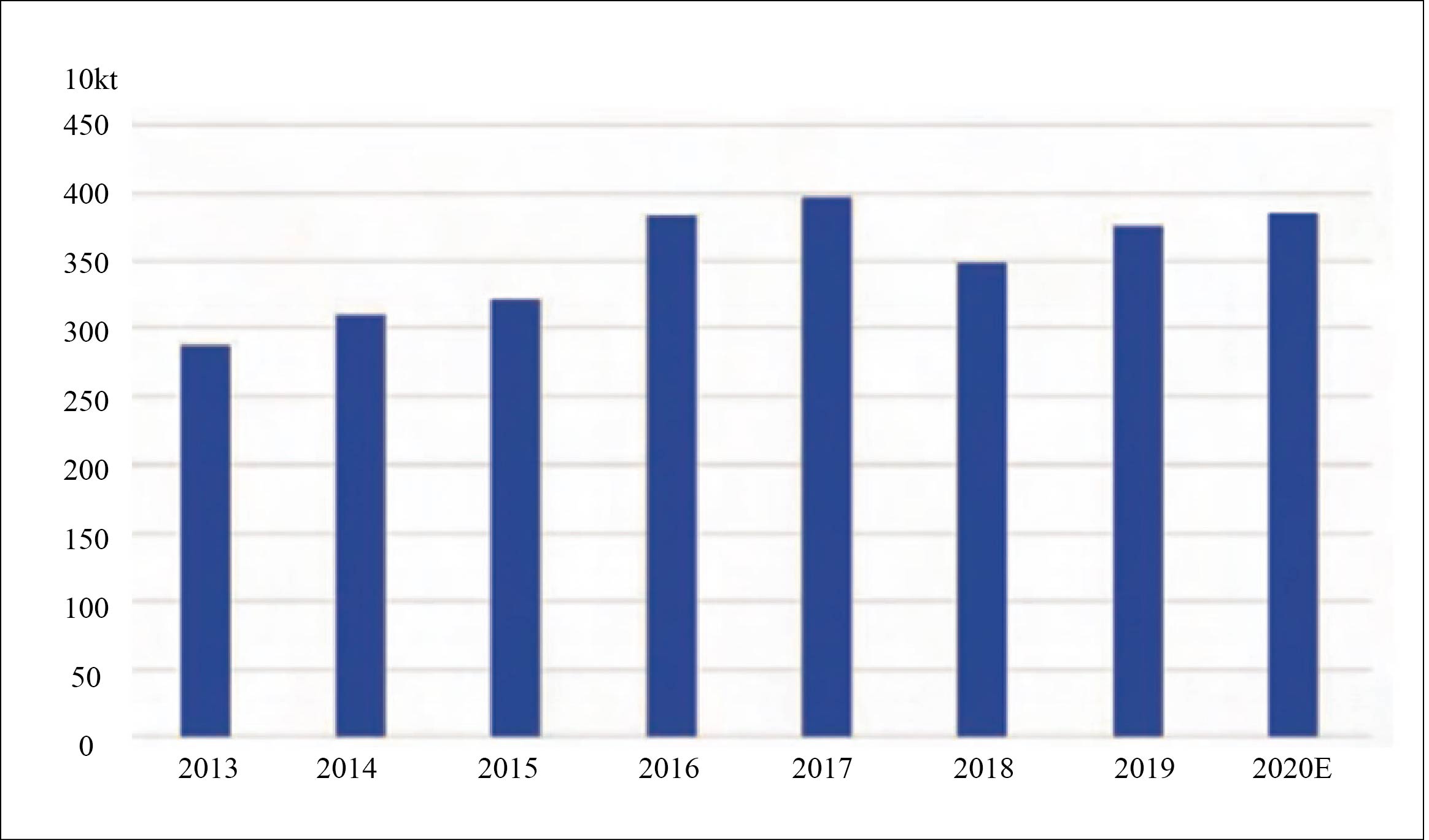By Zhang Cheng, CNCIC
Great domestic market potential
Waterproof coatings have been the functional coating with the biggest consumption in the architecture industry. China's output of waterproof coatings has accounted for 60% of all architectural coatings. China's production of waterproof coatings reached 3.75 million tons in 2019, and it is expected to reach 3.85 million tons in 2020. Figure 1 shows the domestic output of waterproof coatings from 2013 to 2020. As people's requirements for their living environment are getting higher and higher, the demand for revamping of old houses is increasing. In addition, the proportion of decorated houses is increasing backed by the relevant governmental policies, so the market for waterproof coatings will have big developing room. The cost of waterproof in the domestic architecture industry only accounts for 2.8%, while that in developed countries is as high as 7%, which reflects that the domestic market should make great efforts to catch up with.

Figure 1 Domestic waterproof coating output, 2013-2020
Acrylic water-based waterproof coatings dominate the domestic market
At present, the waterproof coatings in the domestic market largely consist of polyurethane waterproof coatings and polymer cement-based waterproof coatings. Polyurethane waterproof coatings have replaced coal tar with asphalt as the key raw material, because the products based on the former can give off highly toxic tar gas and have been prohibited from production and sales in China. Although polyurethane waterproof coatings have good elasticity, ductility, coating quality and UV resistance, most of them are solvent waterproof coatings. The diluent used in the production process is gasoline or benzene organic solvent, which generates a big amount of volatile organic compounds (VOCs). Most of the polyurethane waterproof coatings that can meet the environmental protection standards are reactive waterproof coatings, which are featured with excellent waterproof performance, but the price is high.
Emulsion type waterborne waterproof coatings are more prevailing in the market. Compared with solvent coatings, water-based coatings show much better performance in environmental protection and healthcare, so they will be the key development orientation for domestic waterproof coating producers. Emulsion is an important component of waterborne waterproof coatings, with acrylic emulsion (styrene acrylic emulsion and pure acrylic emulsion) accounting for 64%, and VAE emulsion taking up nearly 30%.
In addition, the waterproof coatings based on SBR emulsion copolymerized by butadiene and styrene monomer is also a popular development direction. SBR emulsion has various advantages, such as good properties, being adaptive to cement based alkaline environment, and relatively low TVOC. However, the high price of SBR latex in China is keeping domestic waterproof coating producers from putting SBR emulsion into massive commercial production.
Industrial reshuffle on the way
The domestic waterproof coating market concentration is still low, but the market scale has increased steadily in recent years, as BNBM Group, the leading enterprise in gypsum board industry, has been accelerating the utilization of waterproof coatings. The market share of Oriental Yuhong, the leading enterprise in the industry, is only about 10%, and the total share of Oriental Yuhong, CKS and BNBM Group, the top three in the industry, takes up only 17%, and that of top ten producers merely accounts for 22%.
The main end-users of waterproof coatings are divided into three categories: real estate, non-housing architecture such as infrastructures, and retail. Among them, the real estate sector accounts for nearly the half of the consumption. However, the downstream architecture market has been softening in recent years, squeezing the overall margin room of waterproof coatings. The environmental protection standards are becoming higher and higher and the concentration of downstream real estate industry is also increasing, so a reshuffle in the waterproof coating industry is seemingly impending.
The effect of waterproof coatings is closely tied to the construction process. While enhancing the training of construction technology, waterproof coating producers are making great efforts to improve the construction performance of coatings themselves, enhance the fitting performance between emulsion and cement, as well as the stability of coatings in different climatic conditions.
On the other hand, the domestic waterproof coating market lacks a specific industrial standard. The General Code for Waterproofing of Architecture and Municipal Engineering issued in 2019 has only regulated the service life of waterproof materials from 5 years to 25-30 years. However, issues such as how to determine the actual service life of the product and how to ensure that the environmental protection and other properties of the waterproof coatings will not change with time are yet to be solved urgently. With the higher industrial concentration, continuous innovation and upgrade of water-based technologies, and the issuance of more professional standards, the waterproof coating industry will have a better development prospect.